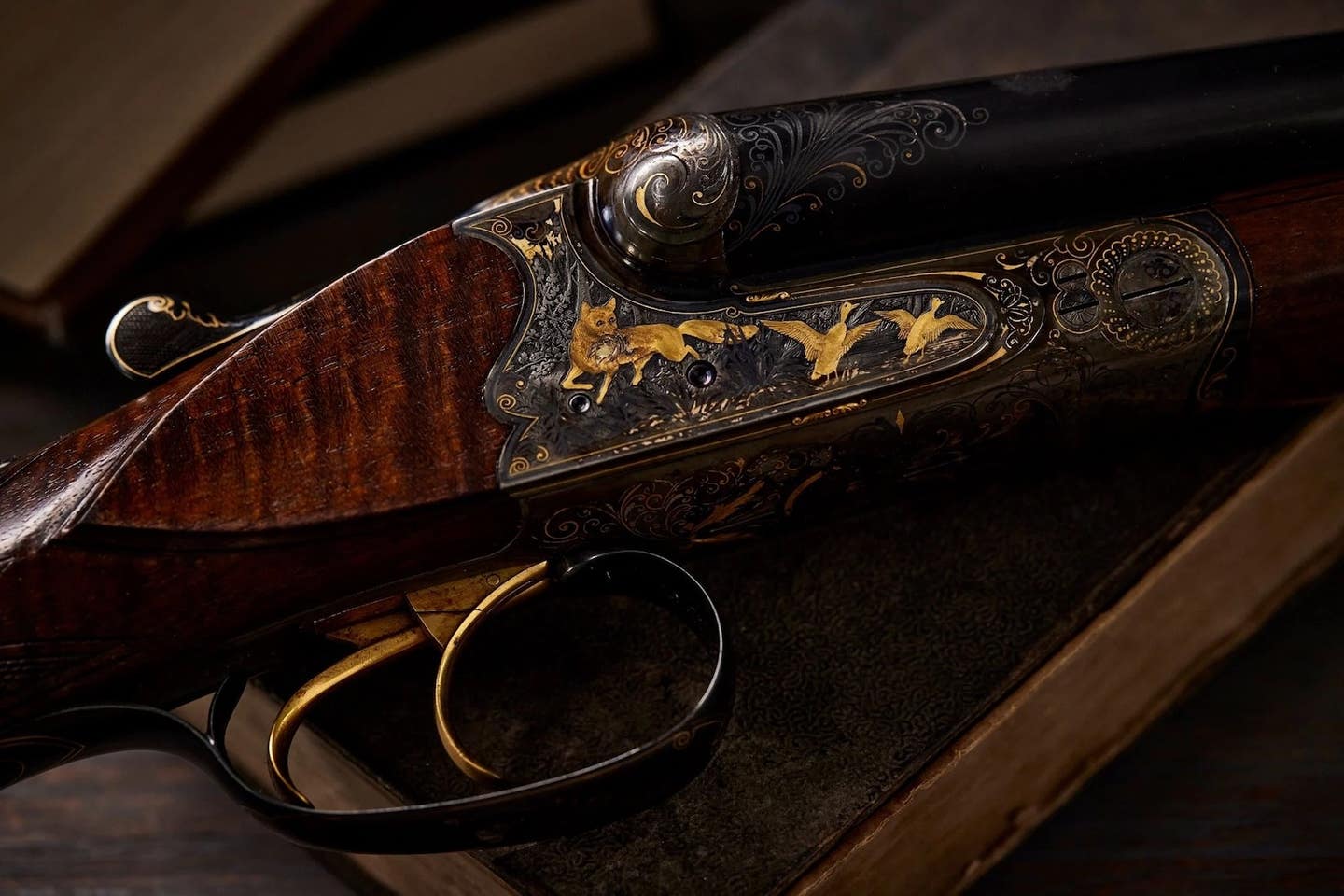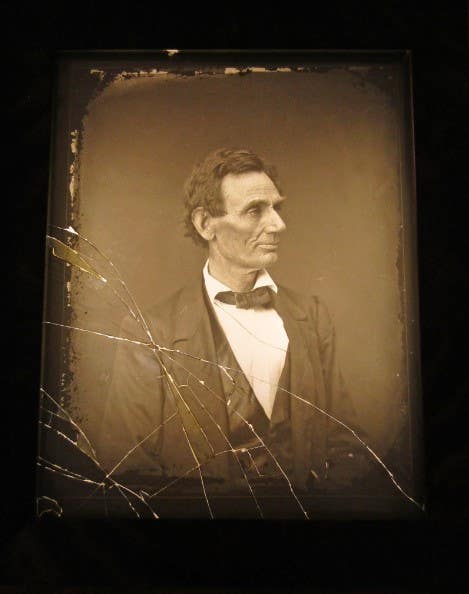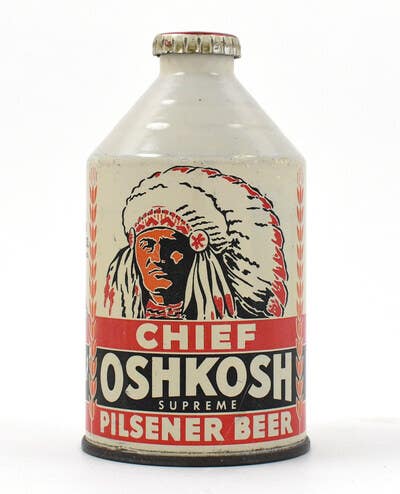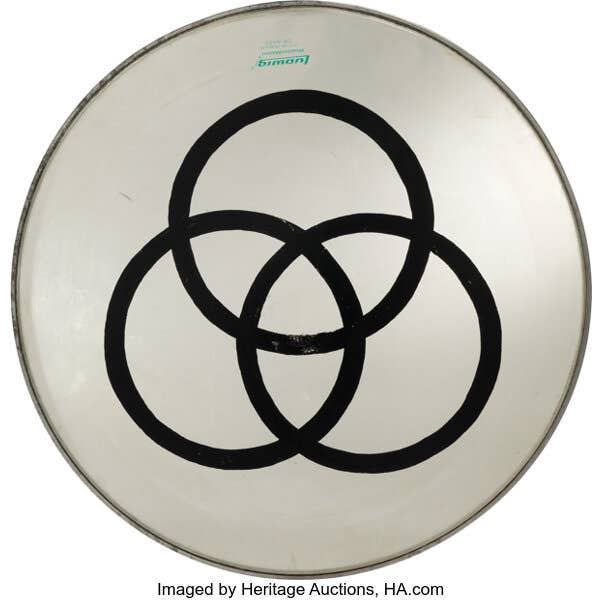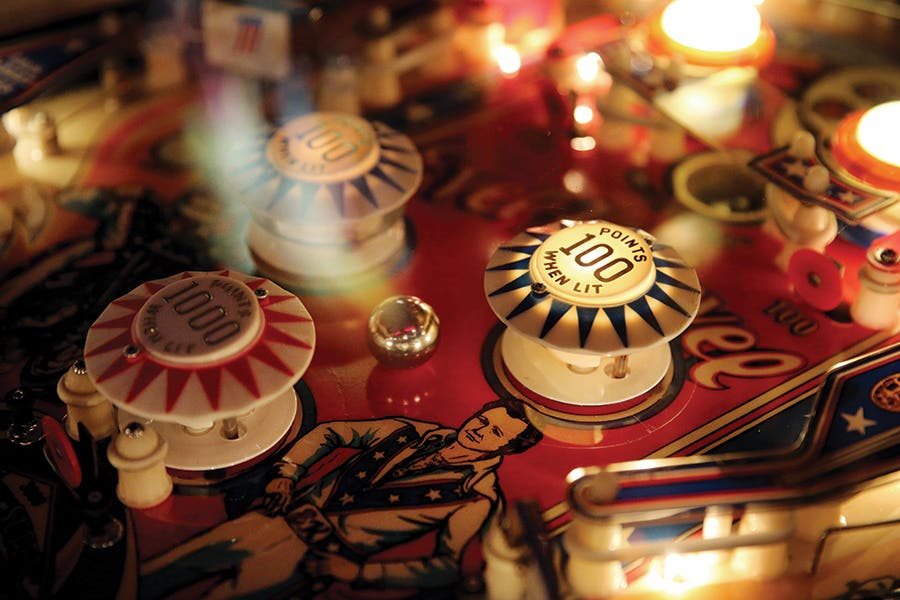Classic beauties and gems of 19th century jewelry
This article is written by renowned jewelry expert and author, C. Jeanenne Bell, G.G., and is an excerpt from the just-published new edition of Answers to Questions About Old Jewelry, 8th Ed. One of my favorite sections in the article appears near the beginning, where Bell states: “The jewelry of the 1860s and ’70s is best described as heavy, massive and solid. Massiveness was equated with well made and sturdy. The bigger a piece of furniture or jewelry, surely the better it must be. Colors were also visually heavy. Rich red velvets covered not only furniture and windows, but also ‘maladies’ as well. The feeling of opulence was everywhere.” To learn more about the societal and faenvironmentshion impacting jewelry of this time period,
By C. Jeanenne Bell, G.G.
Thanks to the movie “Gone With the Wind,” most people are familiar with the clothing and hairstyles of the 1860s and 1870s. It made real the beautiful dresses and manicured coiffures worn by the ladies of the period. Who could ever forget the elegant
dress that Scarlett made from her green velvet draperies? The scene in which Scarlett, dressed in mourning clothes, danced with Rhett Butler is still imprinted in many minds.
The jewelry of the 1860s and ’70s is best described as heavy, massive and solid. Massiveness was equated with well made and sturdy. The bigger a piece of furniture or jewelry, surely the better it must be. Colors were also visually heavy. Rich red velvets covered not only furniture and windows, but also “maladies” as well. The feeling of opulence was everywhere.
The most outstanding feature of fashion was the hoop skirt, introduced by the Princess Eugenie in Paris. It was not unusual to use as many as 30 yards of material for one skirt. Still, they did tend to make the waist appear smaller, and small waists were definitely in fashion. Laced corsets were also used to minimize the waist. Some ladies wore their lacing so tight they were subject to fainting spells. To further emphasize the waist, buckles came into favor. “Buckles for waist bands have now attained colossal proportions, but these are generally imitation, and not genuine gold and silver...” Peterson’s Magazine from November 1864 went on to say, “The chased buckles are more distinguished than the plain dead ones, as the workmanship adds to their beauty. The mother-of-pearl buckles are worn with white dresses; and it is fashionable to wear a buckle both at the front and back of the waist.”
Necklaces adorned every neck. “Necklaces or very thick chains have become indispensable with a low dress, and are also worn with high chemisettes and Swiss bodices,” said the January 1864 Peterson’s Magazine. “The large round jet or coral beads are preferred for demi-toilet and married ladies often wear the thick gold chains.”
These gold chains, combined with other pieces, were the heights of fashion. In November 1864, Peterson’s noted:
“Jewels are of a very massive description, and set flat in the Cameo style; pearls and precious stones are often laid upon enamel, which has a very good effect. Necklaces are almost indispensable now with low dresses. Bold chains are six and eight times doubled and fastened here and there with thick round balls of gold, inlaid with jewels; the same style with pendant ornaments, is pretty for bracelets. Brooches are mostly round in the shape of small shields and very massive; they are made of different shades, some inclining to green, some to red and some of a deep burnish color. Pearls or smaller stones are arranged in a pattern over them.”
A new way to wear chains became popular during the 1865-70 period. Instead of being worn around the neck in the traditional way, they were suspended from over the top of the bonnet and draped over the bust. They were known as Benoiton Chains because a character in the play, “A Famille Benoiton,” wore her necklace in this manner. These long chains were made of gold, pearls, beads or most any kind of material.
Jewelry was being worn at all times and in all places. The pieces were enormous, and many were in the costume jewelry category. The Godey’s Lady’s Book of January 1864 comments:
“Jewelry is now being worn in out-of-door dress. The style in Vogue is the Oriental-crescents, large round sequins and long drooping ornaments being preferred. Very large earrings, brooches, clasps and studs are worn to match, in dimensions hitherto unheard of, and either in plain gold, or in gold and coral, or enameled. These jewels, being but a passing whim of fashion, need not be of the purest gold or precious gems. Even French ladies who have always been very particular on this point, now wear imitation jewels without the least scruple.”
With loved ones off to war, everyone wanted a keepsake close at hand. The locket came to be considered an important part of the total fashion picture. The May 1864 Peterson’s Magazine confirms this:
“Lockets, medallions, etc. are still being worn around the neck attached to narrow velvet ribbons. Black ribbon velvet is generally used for this purpose, as well as to tie the lace tucker which may be worn with a low-necked dress. But frequently the velvet is selected to match the trimming of the dress — a white dress trimmed with a scarlet velvet ribbon, both for the locket and tucker, would be used, and with a blue dress-blue velvet etc. Two yards of ribbon velvet will be sufficient to suspend the locket, as long ends are worn. Many ladies especially in Paris have latterly adopted the plan of mounting precious stones upon black velvet for the throat, a style that will be found advantageous around throats which are neither round nor fair. Necklaces of all descriptions are greatly in vogue but many ladies still retain the simple locket and velvet, in preference to more costly necklets. Rosettes for the shoes made to correspond with the trimmings of the dress, likewise velvet ribbon for the locket are now usually sent home with the dress by the generality of our best dress makers.”
Because the women were involved in working for the war efforts, hairstyles became less complicated. The hair was often worn pulled back, and nets came into fashion. In February 1864, Peterson’s Magazine gave complete instructions for making a hairnet. The article was introduced by these words:
“The hairnet is a very pretty article of dress, and useful also where the hair is
redundant. It is one of those classical fashions, revived, with advantage, in the present day, when the stiff modes are entirely out of favor. The materials are as simple as possible, being nothing more than a good netting silk. Brown is the prettiest color for the general wear; but if a more dressy style is desired, the color should be selected to suit the costume with which it is to be worn.”
Nets were so widely accepted, that soon they were being used with evening attire. This was noted in the April edition of the same magazine, “For small evening parties, dinners, or the opera, nets, when made of fine gold braid, are very becoming and give additional smartness to the toilet. Many young ladies are satisfied with gold braid, fastened to the center of the net and the hair-dress is finished; others add flowers.”
The ears were no longer considered unattractive and with the hair worn back, earrings became fashionable again. The November issue of Peterson’s Magazine stated, “Earrings are worn extremely large and weighty in the Grecian style; bonnets now being so small, the earrings are allowed to show outside them, and have in consequence acquired more importance than ever.”
Combs became a popular adornment for the hair. Not only were they utilitarian, but they could also be an asset to the overall fashion picture. Peterson’s Magazine stated, “Combs for the hair now come within the sphere of jewels. They are made with a wide, flat piece turned back from the teeth, and composing a very rich ornament, set with gold and precious stones; these combs are worn in the back hair; smaller ones are also sometimes used to keep back the hair in the front.”
Editor’s Note: This is just a sample list of the stones and materials commonly used in jewelry produced between 1861-1887. To view more and to see stones and materials used in jewerly from 1840 to 1950, check out the book, Answers to Questions About Old Jewelry, 8th Ed.
DIAMONDS
Diamonds were discovered in South Africa in 1867. A peasant boy playing near a river found a pretty stone and took it home. A traveler passing through the village saw the boy’s prize and suspected what it might be. He was right; it was a diamond valued at $2,500. Word of the find spread, and the diamond rush began.
Diamonds are judged by carat weight, cut, clarity and color. Consequently, three stones each weighing one carat could vary thousands of dollars in price. A carat weighs 200 milligrams, which is equal to 100 points. Hence a half-carat is 50 points, and 25 points equal a fourth of a carat. The cut of a diamond is important. It takes an expert to decide the proper cut for each stone. The clarity of a diamond is determined by the purity of the stone. Flaws such as dark inclusions and feathers can greatly decrease the value.
GOLDSTONE
Goldstone is quite often encountered in old jewelry. It was used for the ground of some mosaics and as a stone for cuff links or stick pins. Since it is neither gold nor a stone, it can be added to the list of misnomers in the jewelry field. Goldstone is an imitation aventurine made of glass to which copper crystals have been added. It has a gold spangled look that is quite attractive. Once seen, it is very easy to recognize.
OPALS
In 1870, a huge opal field was discovered in Australia. This prompted Queen Victoria to try again to lift the veil of superstition that had befallen the stone. The novel, “Anne of Geurstein,” written by Scott and published in 1829, was responsible for the opal being considered bad luck. Lady Heromine, a character in the book, always wore an opal in her hair. Its iridescent glow seemed to reflect her every mood. When she came to a tragic end, the opal’s mysterious powers were blamed.
GARNETS
Throughout the ages, garnets have been worn and admired. Although the word garnet usually conjures up pictures of a wine red stone, they can be found in every color except blue. Actually, garnets are a group of stones that have the same structure, but differ chemically. The garnets most associated with the name are almandine (AL-man-dine) and pyrope (PIE-rope). They are also the most common.
The war helped prove to women just how impractical their clothes were. When one had to get up each morning and ride the omnibus to work, it was painfully apparent that huge hoops had no place on public transportation. The skirts were also much too long. They were a nuisance when walking on muddy streets, which every working woman had to do on occasion.
As early as 1874, women were holding dress reform meetings. Something had to be done. By the 1880s the hoops were gone, but they were replaced by the bustle. The skirts were much narrower, but the bustle did protrude; “How well the bustle performed may be judged by the story of the Washington lady who walked to church and home again with a toy rooster perched on her bustle.” Many women wanted to do away with this contraption.
In April 1887, the fashion editor of the Young Ladies’ Journal wrote, “We are told by competent authorities that steel tournures, and all the metallic appliances which are so uncomfortable, are going out of fashion.”
Things improved very quickly. Two months later the same writer made this comment:
“Fashion is really becoming quite rational, after all the extravagances and eccentricities with which has too justly been charged. It has now become quite quiet and reasonable. The ridiculous tournures, enormously protruding, which vexed seriously inclined spirits for the last few years are now almost forgotten; they have been transformed into a modest cushion, scarcely apparent, which offers a timid support to the skirt, making the bend of the waist. Our shoes and boots, with stilt-like heels, have long been exchanged for rational chaussures with low square heels; an absurd peak by which they terminated hurt so many feet that it has been found quite necessary to change it for a rational shape, neither square nor pointed, but something between the two, which looks graceful without being uncomfortable.
“What else were we blamed for? Extravagant chapeaux, which towered high above the head-inconvenient hats, which at the theater played the troublesome part of screens for these spectators who were unfortunate enough to sit behind them. Well here reason is triumphant, and our capotes are perfectly charming; small and well posed upon the head, they form a most becoming frame to the face
“What, therefore, can modern Fashion be accused of now’? It is quite rational and practical and logical as most things are in the ‘Age of Realism.’ ”
Hairstyles evolved from being pulled back in the 1860s and 1870s, to being put up in the 1880s. Everyone was hair conscious. Switches of extra hair were worn by most women to supplement what Mother Nature had given them. The new hairstyles were identified by name. The Young Ladies’ Journal described three of the most popular styles of 1887:
“ ‘The Diana Coiffure’ is much in vogue. For this coiffure the hair is turned straight up from the roots, and arranged on the top of the head into a sort of rouleau, which is fashioned with a small tortoiseshell comb. Two tortoiseshell pins to match are used to fasten the ends of the front hair into loops at the sides quite high on the head.
“‘The Marie-Antoinette Coiffure’ is also much in vogue. For this coiffure the hair is arranged in a rouleau; it is not brushed straight off from the face and fastened straight
down, but merely rolled off and attached with pins, but so as to remain loose. This style does not suit all faces but is becoming to ladies who have a low broad forehead, and straight eyebrow.
“ ‘The Psyche Coiffure’ is also very fashionable. The hair is also combed up from the roots, but it is then twisted and arranged into two loops, fastened with a small comb and pins of light-colored tortoiseshell.”
In 1885, Charles Dana Gibson drew his first Gibson Girl, who became the epitome of what was most desirable. Women all over the country emulated her dress, hairstyle, manners and even her drooped eyelid, head-tilted-back poses. Alice Roosevelt, the President’s daughter, gave the American public an opportunity to vicariously experience the thrill of a real live Gibson type. They were shocked by her flaunting of the rules, such as smoking in public, but since she did things they did not have the courage or the money to do, it made her even more endearing. Teddy Roosevelt loved her and was proud of her independent spirit, even though he once stated, “I can be president or I can handle Alice. I can’t possibly do both.”
The mood of the world was reflected in these new up-sweep hair fashions. In England, people were ready to shed the heavy mood that Victoria’s mourning had spread across
the country. They were ready for some gaiety in their lives.<br.
Americans were beginning to feel carefree and optimistic. Women were experiencing an unprecedented freedom in fashion and this lightness began to be reflected in jewelry. By December 1887, a new style of jewelry was emerging. These changes were noted in The Young Ladies’ Journal:
“These are a few changes to note in fashionable jewelry, the solid, massive portebonheur is quite out of fashion; bracelets are all made in the chain style, or else composed of a fine circle with diamonds and precious stones; gold chains and lockets for the neck are things of the past; brooches are of the most fanciful and dainty type, and are fastened here, there, and everywhere, among lace folds, close to the shoulder or near the neck; ear drops are as small as possible; diamonds are fixed in close to the ear. Combs and hairstyles are ornamented with pearls and precious stones. Jewels are now required to have at least as much artistic as intrinsic value.”
So be it — out went the old and in came the new.
Editor’s Note: This excerpt is from Chapter 2 of the just-published new editon of Answers to Questions About Old Jewelry, 8th Ed.



